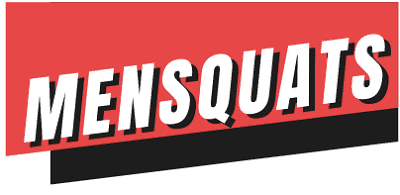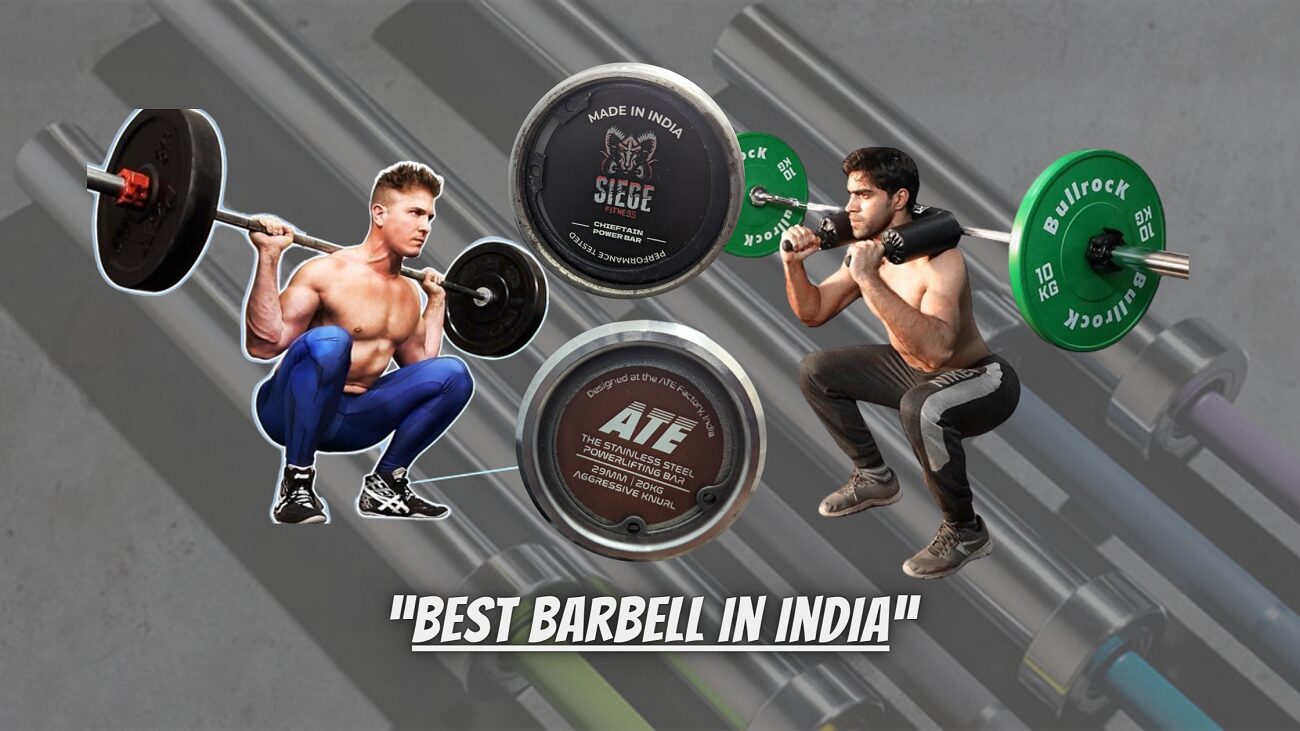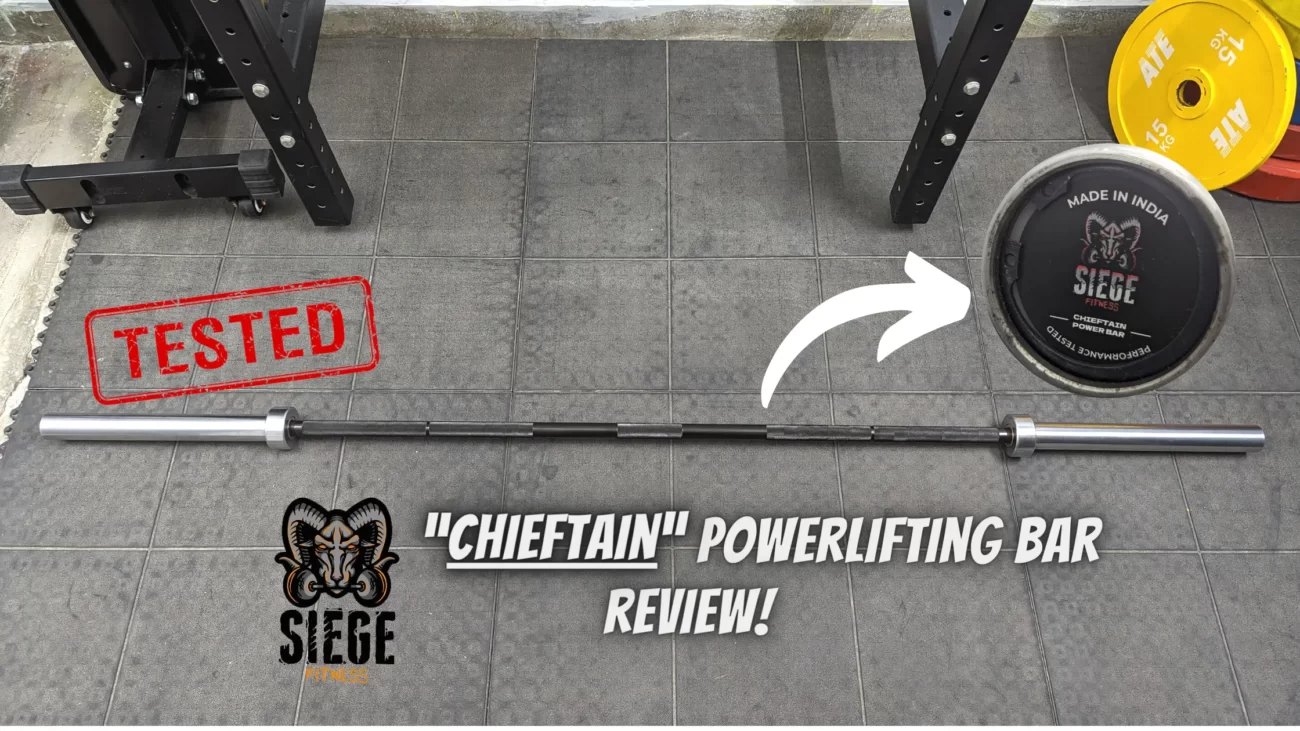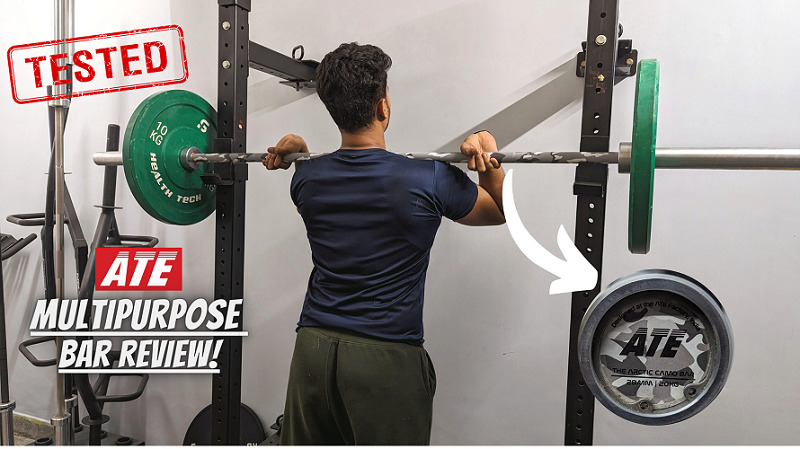Is chalk bad for a barbell?
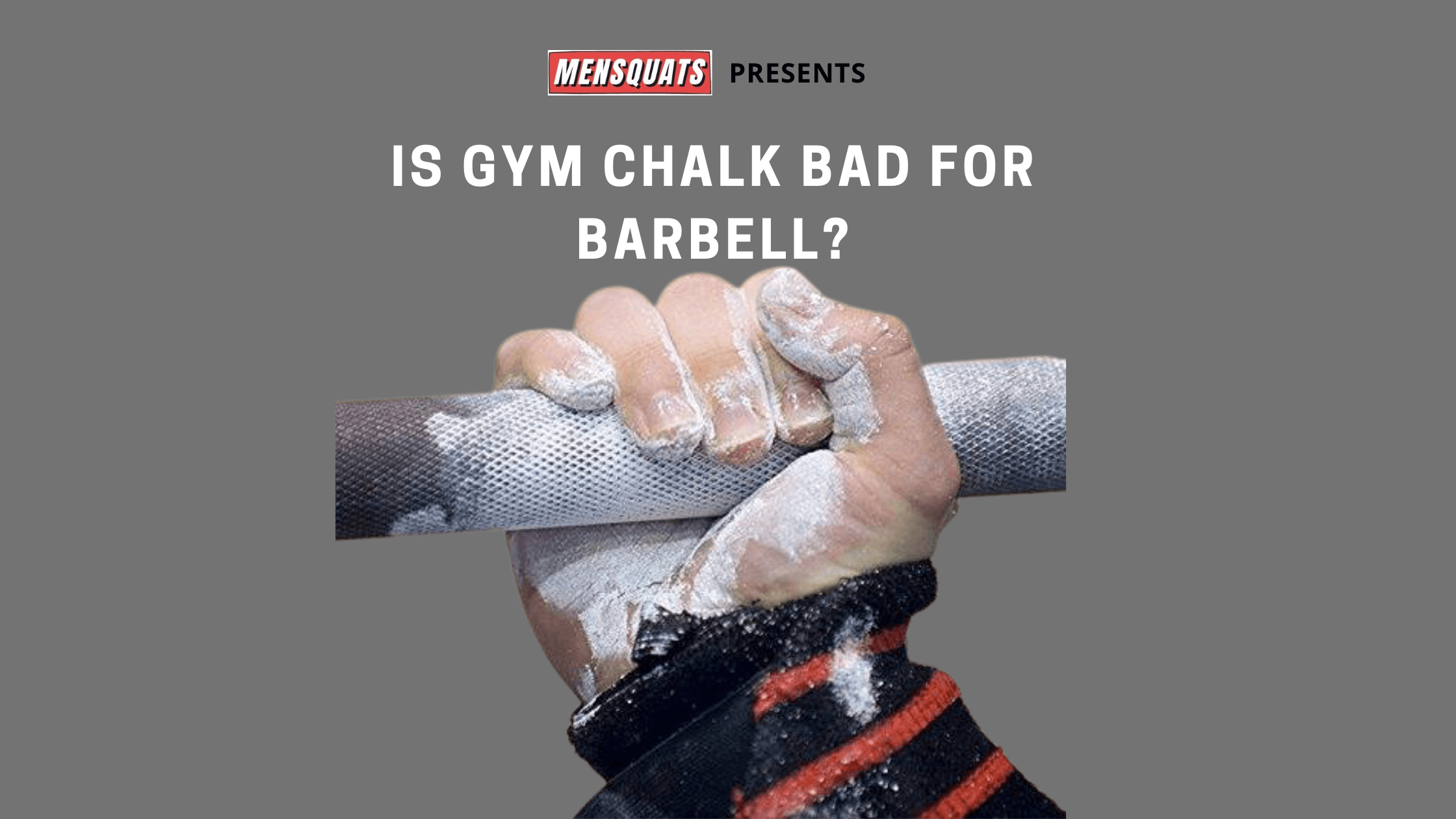
Whenever you purchase your own barbell, after you put the money down, you want to make sure that you protect that investment so it can last you many years. When using your barbell, it is really easy for there to be a buildup of gym chalk powder, dirt, and debris, even dead skin and blood.
These buildups can ruin the finish of your bar by oxidizing and turning to rust if left untreated.
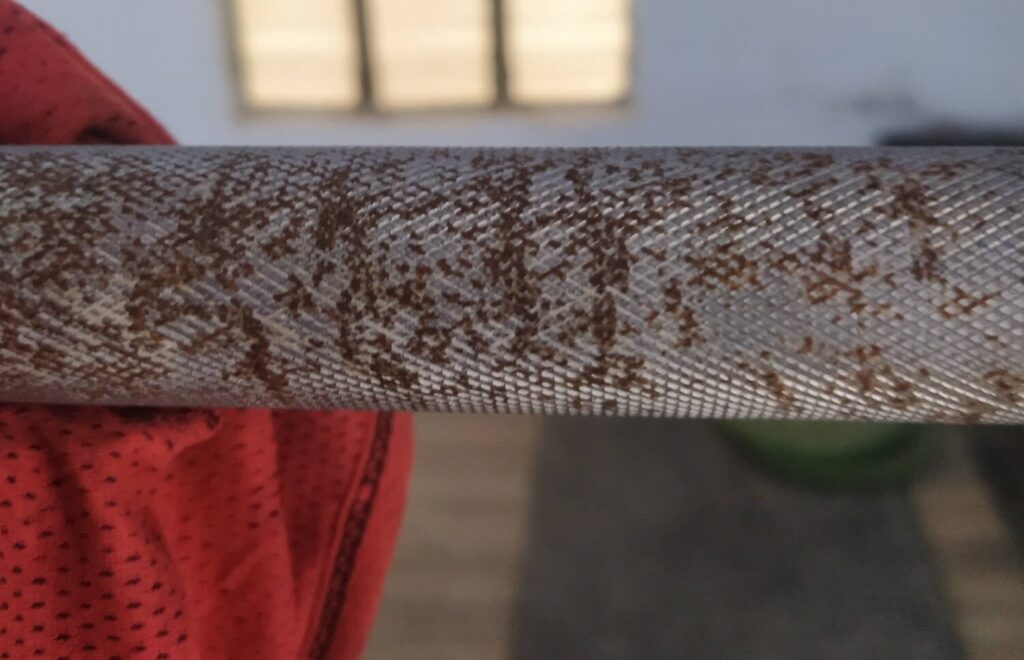
➡️ The main spot of this buildup is going to be in between the knurling, which is the crosshatching on the shaft. All because there’s still a lot of people who are using chalk incorrectly and it’s kind of interesting because chalk is so simple, it’s pretty hard to go wrong with.
Even though you wipe it down daily with the spray in a rag. That rag is going to be unable to penetrate and remove build-ups from in between the knurling.
👉 That is why I recommend doing the two-week tune-up which will keep your barbell looking and feeling fresh.
What wrong does it do to put chalk directly on a barbell?
We can still manage to figure out a way to clean chalk from our barbell. But still putting it directly onto the barbell is not something you want to do.
1️⃣ It’s going to negatively impact your grip.
2️⃣ It is actually going to negatively impact the life of that equipment that you’re using in the long run, which is something we want to avoid.
3️⃣ Your barbell color looks off the beat.
Let’s talk a little bit more about “Is chalk bad for a barbell?” But first, just to get a general understanding, all barbells have:
Knurling: The knurl itself all that means is the etching and ridging that’s put on the bar to help assist in grip. How deep or aggressive that knurling is and where it’s placed on the bar is going to differ depending mostly on what that barbell intended to be used for. 😉
Whether it be a powerlifting bar, weightlifting barbell or maybe it’s just like a general-purpose barbell that a lot of commercial gyms have.
There’s a couple of reasons why commercial gyms tend to go with not so deeper knurling bars:
1️⃣ They’re cheaper in most cases.
2️⃣ For the average gym goer, they don’t want very aggressive knurling that could potentially damage their hands and they don’t really care about having a center knurl on the bar for things like squats.
Because believe it or not, some commercial gyms don’t actually have any squat racks for squatting. 👉 Pretty shocking to hear that myself, but for general powerlifting and strength training, you want an aggressive or a deep knurl on the bar.
What else to use other than gym chalks?
For many of us we don’t have access to great barbells, maybe we go to a commercial gym with a bunch of general-purpose bars or maybe the equipment in that gym has been used by so many people that knurling that was once really aggressive has now been dulled.
Therefore, there are some workarounds. There are things like lifting straps, for example, but I know many people tend to want to use gym chalk powder or liquid chalk instead.
Because they see chalks been used in competition and I think people view lifting chalks, a lot differently than they view straps, but that’s a different topic to talk about.
What’s wrong people do while using gym chalk?
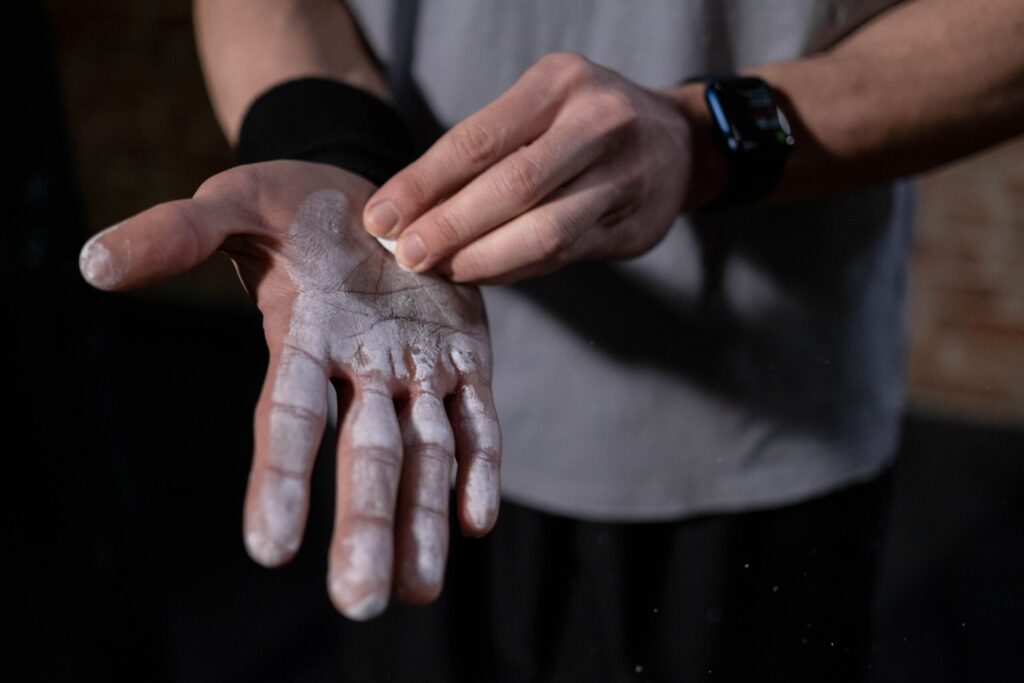
When they put gym chalk block on their hands to help absorb moisture and give you a better grip on that slick bar, they start thinking that,
“Hey you know this chalk helps in grip right and I can’t get a ton on my hands, so why don’t I go ahead and just kick it on to the bar. I’ll get a block of chalk and use it almost like a cheese grater and just put it all over the bar and that’s going to help me get a better grip, Right?”
NO WRONG!!! ❌ Because when you think of the purpose of the knurling itself, which would have depth. The more aggressive the knurl, the better the grip you’ll have.
Thus rendering it useless by taking chalk and filling up those ridges with chalk.
And you’re now getting an actual slicker bar, so it’s not going to help you that much.
I can’t tell you the amount of times that I’ve been to other gyms and seen barbells lying around that have chalk caked in them and people don’t clean it.
👉 By not doing so, not only are you hurting yourself, but you’re hurting the people that are going to use that bar after you.
3 Disadvantages of gym chalk powder build up on barbells?
1️⃣ Grip is not going to be as good:
That’s why if you’ve ever been to competitions you’ve probably seen that in between each set they have someone out there with a brush and cleaning all the chalk off that bar.
2️⃣ It’s actually going to hurt your grip to have chalk on the bar.
Again, you want that clean aggressive knurling and even when you put chalk on your hands. The idea is just to get that moisture off so you don’t need a ton of it and that’s going to improve your grip and your lifts in the long run.
Now that’s not where the story ends, however, because when you think about the reasons why chalk is effective for the gym? Or is chalk good for weightlifting? Gym chalk helps take the moisture out of your hands.
The only problem is when you take it onto the bar and you leave it there and you don’t clean it off.
3️⃣ It’s still drawing in moisture that’s in the air:
What you’re going to end up doing, in the long run, is really damaging your bar. You’re going to start getting rough spots, so you’ve ever been to a gym that has a barbell that’s caked in chalk and tries to clean it off.
You probably find out that metal underneath there is pretty beat up, rusty, and oxidized by that point. So if you’re going to be using chalk, just make sure you use some on your hands.
➡️ Remember, a little will go a long way.
Definitely do not put it on the bar, it actually hurts your grip but if you are going to put it on your bar, which you shouldn’t. ✔️ Make sure you’re cleaning it off after each use.
By doing this, you not only get a better lift but better life out of your bar.
FAQs about gym chalk
1. What’s better: liquid chalk or chalk?
Overall, liquid chalk is considered best in most circumstances, but serious lifters still stick to a dry gym chalk powder. The expectation with liquid chalk is, if you have an over-drying skin and if you apply it in less quantity, it would disappear quickly.
Also, you have to wait for 2-3 minutes after applying liquid chalk to let it dry. Whereas dry chalk is quick and readily available.
2. How to clean chalk off the bar?
You need just one thing to clean chalk off the bar, strong bristle brush. If you have a zinc bar that is coated, you want to make sure you use a nylon brush.
If you use a brass brush or a stainless steel brush, it will scratch that surface and mess up the coating, chipping it away and eventually ruining the look of your bar.
You only want to use a brass or stainless steel brush if you have a bare steel bar, a stainless steel bar, or a chrome bar.
3. Is chalk good for weightlifting?
Yes, you have to use chalk for weightlifting or any sport which uses a barbell. Though the barbell knurl is made to dig into the lifter skin, so as to get a better hold. But the moisture in skin or sweat can still make your grip less strong. ➡️ Therefore, using gym chalk serves all purposes.
4. Is gym chalk edible?
You shouldn’t eat gym chalk. Though it’s minimally toxic, but it can disturb your digestive system. Therefore, smelling or ingesting gym chalk during your lifting, even if you develop a habit of it from a young age, you should stay away from it.
5. What is gym chalk used for?
Gym Chalk Powder contains magnesium carbonate, which aids inappropriate grip by absorbing moisture from your palms and fingers. While some people prefer using weight-lifting gloves, the easiest way to get a strong grip is to use chalk. That’s why weightlifters and power lifters commonly use it.
Hope that’s helpful if you have any other suggestions when it comes to chalk on the bar. Leave it in the comments section.
Thanks for reading.
Sharing is caring. 💗
